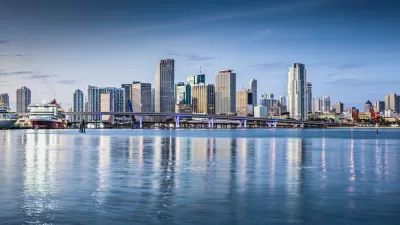In a 2-part series, NPR reports on the rapid downfall of coal as an energy source and its replacement by natural gas - each now produces about one-third of America's electricity. Fracking is key to increased NG supplies - but it carries its own risks
Guy Raz narrates both stories. Reporting on the release of a new study by the National Oceanic and Atmospheric Administration (NOAA) linking climate change to extreme weather, he presents some startlingly positive news:...."there is a glimmer of hope. It turns out that U.S. carbon emissions are down nearly 8 percent since 2006."
"Another study suggests that it might actually be feasible to meet President Obama's goal of reducing U.S. greenhouse gas emissions by 17 percent by the end of this decade not because of tough new regulations or even legislation, but because of the increasing use of natural gas to generate electricity."
For the first time, natural gas and coal produced the same share of America's electricity in June - 34%, down from coal's domineering 60% in 1988.
"This boom in natural gas has been killing the Appalachian coal industry (the topic of the first NPR report on King Coal) but it also has environmental impacts both good and bad."
Raz interviews Lawrence Cathles, a professor at Cornell University who wrote "Assessing the greenhouse impact of natural gas", who, "took a close look at natural gas usage and found that replacing coal with natural gas would cut about 40 percent of carbon emissions linked to global warming."
However, other studies appear to question that claim. Reporting in Forbes on July 15, James Conca writes, "It turns out that greenhouse gas (GHG) emissions are much higher from using natural gas to produce electricity than from using coal. So much for the myth that replacing coal with gas will help stave off global warming...."
Aside from greenhouse gas emissions, there appears little if any doubt of the reduction, or even elimination of conventional and toxic pollutants in shifting to natural gas.
"There's a 100 percent reduction in mercury emissions ... [and] a 50 percent reduction in the rate of carbon dioxide production," says Georgia Power plant manager Tony Tramonte, featured in the June 14 NPR report, explaining the changes from his plant's shift from coal to natural gas.
"He also says there's a 99 percent reduction in sulfur dioxide and about a 90 percent reduction in nitrous oxide, with a plant that's now five times larger than the one it replaced."
Thanks to Loren Spiekerman
FULL STORY: From Coal To Gas: The Potential Risks And Rewards

Planetizen Federal Action Tracker
A weekly monitor of how Trump’s orders and actions are impacting planners and planning in America.

Chicago’s Ghost Rails
Just beneath the surface of the modern city lie the remnants of its expansive early 20th-century streetcar system.

San Antonio and Austin are Fusing Into one Massive Megaregion
The region spanning the two central Texas cities is growing fast, posing challenges for local infrastructure and water supplies.

Since Zion's Shuttles Went Electric “The Smog is Gone”
Visitors to Zion National Park can enjoy the canyon via the nation’s first fully electric park shuttle system.

Trump Distributing DOT Safety Funds at 1/10 Rate of Biden
Funds for Safe Streets and other transportation safety and equity programs are being held up by administrative reviews and conflicts with the Trump administration’s priorities.

German Cities Subsidize Taxis for Women Amid Wave of Violence
Free or low-cost taxi rides can help women navigate cities more safely, but critics say the programs don't address the root causes of violence against women.
Urban Design for Planners 1: Software Tools
This six-course series explores essential urban design concepts using open source software and equips planners with the tools they need to participate fully in the urban design process.
Planning for Universal Design
Learn the tools for implementing Universal Design in planning regulations.
planning NEXT
Appalachian Highlands Housing Partners
Mpact (founded as Rail~Volution)
City of Camden Redevelopment Agency
City of Astoria
City of Portland
City of Laramie




























